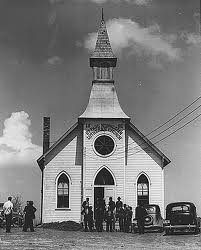
Minnesota Church records definitely are a abundant source for the genealogical and historical researcher. In many parts of Minnesota, church records predate civil records. They consequently record vital occurrences, providing birth, marriage, and death details which could often be lost. Apart from offering names and dates, church records may uncover relationships between people and depict a family’s standing in the community. In addition, entries of a personal nature are not unusual, and these may provide you with a glimpse into an ancestor’s persona or behaviors.
Before Minnesota County and city governments collected vital records, many people noted crucial times, events, and names in their family Bible. Family Bibles are invaluable research tools. Despite the fact that the dates cannot be guaranteed, Family Bibles are a tangible link with past generations.
Minnesota Church records are a rich resource for the genealogical and historical researcher. In many parts of Minnesota, church records predate civil records. They therefore document vital events, giving birth, marriage, and death information that might otherwise be lost. Besides providing names and dates, church records may reveal relationships between people and depict a family’s status in the community. In addition, entries of a personal nature are not uncommon, and these can offer a glimpse into an ancestor’s character or habits.There are many denominational histories published that give good information on the history of Minnesota’s various churches. The French explorers and Catholic missionaries were the first to try to instill European religious values within Native American tribes. Prairie Island, which was near what is now Hastings, was home to a chapel built by Radisson and Groseilliers in 1656. In 1727, Fort Beauharnois was constructed on Lake Peppin by the Mission of St. Michael the Archangel. Lake Peppin was part of the Mississippi River.
The first Bishop of Dubuque, Iowa, Right Reverend Mathias Loras, came to St. Peter’s in 1839. That area is now known as Mendota. Upon visiting the area, he discovered that there were 185 practicing Catholics, some of which were Sioux, some English and some French. So, he made arrangements to set up a parish in the area.
There are many sacramental records that exist for the Roman Catholic Archdiocese of St. Paul and Minneapolis. They are currently being transferred to microfilm. For more information and limited research access, Dr. Robert Gamboni’s office can be contacted at the Archdiocese of St. Paul and Minneapolis, 226 Summit Avenue, St. Paul, Minnesota 55102.
The Minnesota Historical Society also has some records of questionnaires for the Archdiocese of St. Paul and Minneapolis. Those questionnaires were taken in the 1930s and 1940s originally, but were later added to throughout the next few decades as the collection was transferred to microfilm, ending in the 1970s.
By 1859 there were 7 congregations in St. Anthony, 8 in Minneapolis and a whopping 15 in St. Paul. The most common religious congregations in the area at the time were: Episcopal, Presbyterian, Methodist, Baptist, Congregational, Catholic
There were also Lutheran churches in the 1850s in the Vasa and Chicago Lakes settlements, which were both Scandinavian. Quaker settlements could also be found in the area and, in 1856, the first Jewish services were held in the St. Paul area.
The Minnesota Historical Society holds many different court records. Some are on microfilm, while others are original documents. There are many records regarding the United Church of Christ and the Quakers.
Some of the American-Lutheran Church records and many of the Region Three Archives of the Evangelical Lutheran Church can be found in St. Paul at the Luther Northwestern Seminary.
Swedish-American records for the Minnesota Conference of the old Augustana Synod are on microfilm and housed in Minneapolis at the American Swedish Institute. St. Paul holds records for the Lutheran Church-Missouri Synod’s Minnesota South District. They can be found at Concordia College. Gustavus Adolphus College also holds several Lutheran Church records for Swedish-Americans.
Some of the congregation records and church location records for the 1930s are listed in “Historical Records Survey, Churches” and those WPA Minnesota Papers records are located at the Minnesota Historical Society. They are listed according to county, community and then church name.
The Minnesota Historic Resources Survey was completed from 1973 to 1979 and it covers 300 organizations, whose listings are all organized by county. Those records are on microfilm and guidebooks for them are available at the Research Center at the Minnesota Historical Society. The guidebooks point to the church record locations in various repositories and historical societies. The articles of incorporation for religious organizations and churches are listed in Secretary of State notebooks at the State Archives.
Minnesota Church and Bible Links
- Minnesota Church Books (amazon.com)
- Minnesota Bible Books (amazon.com)
